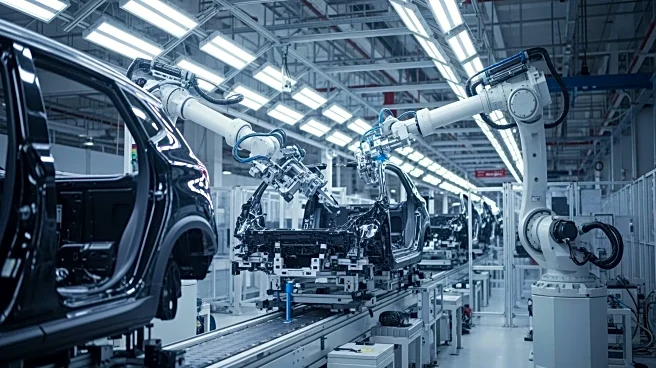What's Happening?
Stellantis has announced a significant shift in its manufacturing strategy by moving the production of the next-generation Jeep Compass from Ontario, Canada, to Illinois, USA. This decision is part of Stellantis'
$13 billion plan to expand its U.S. manufacturing capabilities. The move is expected to benefit the Belvidere plant in Illinois, while the Brampton plant in Ontario faces a loss. This strategic shift reflects Stellantis' focus on strengthening its presence in the U.S. market, which is seen as a key driver of profitability.
Why It's Important?
The relocation of Jeep Compass production to Illinois is a strategic move that underscores Stellantis' commitment to the U.S. market. This decision is likely to boost local employment and economic activity in Illinois, contributing to the state's manufacturing sector. It also highlights the competitive dynamics within the automotive industry, as manufacturers adjust their strategies to capitalize on market opportunities. For Stellantis, this shift is crucial for enhancing its competitive edge and aligning with consumer demand in the U.S., which remains a vital market for automotive sales.
What's Next?
Stellantis will focus on ramping up production at the Belvidere plant to meet demand for the Jeep Compass. This may involve investments in infrastructure and workforce development to ensure efficient operations. The company will also monitor market responses and adjust its strategies accordingly to maintain its competitive position. Stakeholders, including local government and industry partners, will likely engage in discussions to support this transition and maximize its benefits for the regional economy.
Beyond the Headlines
The production shift to Illinois may have broader implications for U.S.-Canada trade relations, particularly in the automotive sector. It raises questions about the future of cross-border manufacturing and the impact of such decisions on regional economies. Additionally, Stellantis' focus on U.S. manufacturing could influence industry trends, prompting other manufacturers to reevaluate their production strategies in response to changing market dynamics.













